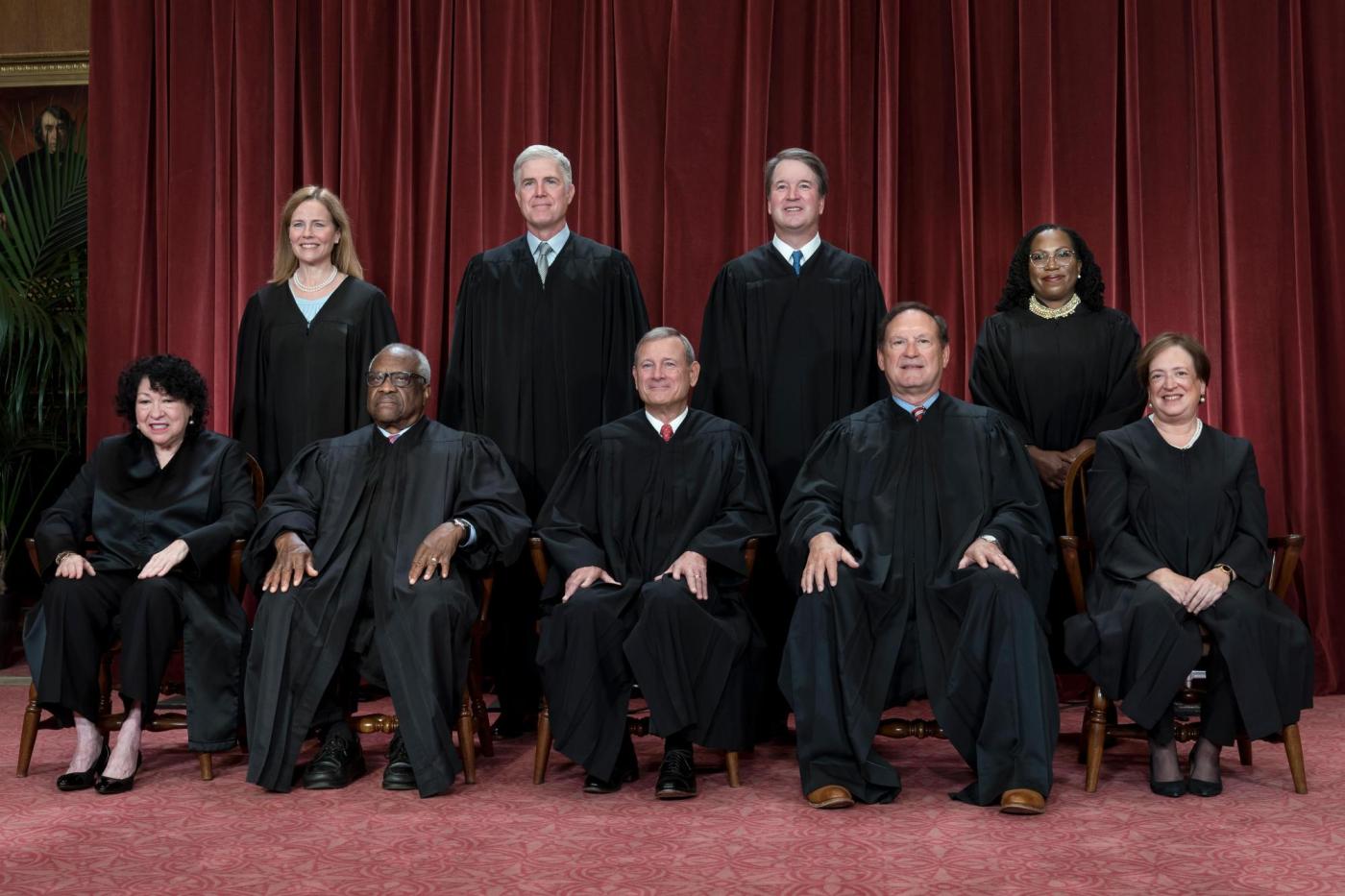
Noah Feldman: The Supreme Court doesn’t agree on what racism is
According to the Supreme Court, it’s perfectly fine for state legislatures to draw congressional districts according to political party — they just can’t gerrymander by race. This simple-sounding rule poses a serious practical problem, however, in places where there is a high correlation between being Black and voting Democratic. The conservative majority of the court, in a 6-3 decision issued last week, made it much harder for plaintiffs to prove that race, not partisanship, is the reason a given district has been gerrymandered.
The case, Alexander v. South Carolina State Conference of the NAACP, is an object lesson in the conflict between two competing theories of how we should think about racism in America today.
The decisions and dissents are a bit technical. Justice Samuel Alito wrote the majority opinion, which was joined by all the court’s conservatives. Alito argues that courts should assume that legislatures are acting in “good faith.” In other words, faced with a gerrymander in a place like South Carolina where at least 90% of Black voters vote Democratic, we should not presume race was the motivating factor for the Republican-dominated state legislature. To convince the court otherwise, the plaintiffs should compare the contested map with an “alternative map” of a district gerrymandered purely on partisan grounds but not racial ones. In the absence of such an alternative map, Alito wrote, the court should infer that partisanship, not race, was the underlying motive — making the district constitutional.
In dissent, Justice Elena Kagan, joined by the court’s two other liberals, excoriated the good-faith assumption and the requirement of the alternative map. Her point was that, according to Supreme Court precedent, the justices are supposed to accept the gerrymandering decisions of district courts unless those lower court decisions are clearly erroneous. The majority, she emphasized, violated this principle by imposing the presumption of good faith and the requirement of an alternative map.
So much for the law: What’s going on behind the doctrine?
The answer is a profound disagreement about racism between the court’s two factions. Alito and the conservatives think that the Constitution should protect Black people only from the most virulent bigotry — the kind that led South Carolina to embrace slavery until it lost the Civil War and segregation until the Civil Rights movement produced the Voting Rights Act of 1965.
More than that, they believe that such explicit racism has now effectively disappeared. The judicial presumption of good faith is implicitly based on the notion that the white South Carolina Republicans who gerrymandered the district just want Republicans to be elected to Congress and wouldn’t care if those Republicans happen to be Black. Put another way, the court’s conservatives assume that the South Carolina legislature is sticking it to Black South Carolinians because they are Democrats, not because they are Black.
Kagan and the court’s other liberals see it differently. First, they don’t agree that overt racism is dead. A presumption of good faith is therefore premature, to put it mildly. The law shouldn’t be rigged to make it harder to prove racism than to prove other kinds of legal claims.
Second, the court’s liberals implicitly believe that racism today must be understood as more than just personal bigotry. The core idea of structural or systemic racism is that, even if we could all wake up one day miraculously free of any biases, the structures of racial disadvantage created over hundreds of years of slavery and segregation would still be with us. And Black people would still, on average, be more likely to live in locations determined by that history, as is the case in South Carolina. Under this way of thinking, the fact that South Carolina Republicans can gerrymander Black people into a district to limit the influence of Democrats isn’t a neutral act or even a purely partisan one.
At a legal level, you could see the Supreme Court’s split in this case as a consequence of its refusal to find partisan gerrymandering unconstitutional. Kagan tried hard to get Justice Anthony Kennedy, the court’s swing vote from about 2006 to his retirement in 2018, to hold partisan gerrymandering to be a constitutional violation. She came close, leading Kennedy to at least entertain the possibility, but in the end, she lost the flight. Now the court is differently configured, and the conservatives are following the logical implications of their acceptance of partisan gerrymandering.
At a more fundamental level, the divide on the court reflects a divide in the country about race and racism. In that respect, this case is similar to last year’s major decision on affirmative action in college admissions. We can expect more of the same in the years to come.
Noah Feldman is a Bloomberg Opinion columnist. A professor of law at Harvard University, he is author, most recently, of “To Be a Jew Today: A New Guide to God, Israel, and the Jewish People.”
Related Articles
Pamela Paul: What flies on campus won’t necessarily fly in the bigger world off campus
Other voices: China embraced electric vehicles. The U.S. didn’t. Now we’re paying the price
Robert Pearl: Medical malpractice in the age of AI: Who will bear the blame?
Marc Champion: Yes, Israel is being held to a different standard. But …
Jacobson, Jokela: What should we fear with AI in medicine?


